
Meditate under an icy waterfall, walk on water ninja style, and take the ninja train in Mie, Japan
- White-robed and wearing rubber boots, visitors to a centre in Mie, Japan, clamber to a space under a waterfall to meditate, and learn to blow darts from a gun
- Nearby Iga takes its ninja history less seriously, warrior mannequins crouching in luggage racks of ninja-painted trains and greeting arrivals at its station
Falls spill crystal-clear water into the fish-filled rivers and streams that run through the steep, verdant mountains of Japan’s Mie prefecture.
In Nabari city, natural tranquillity defines the Akame 48 Waterfalls’ riverside trail, where the air is fresh and leaf-scented – but masks a violent history.
During the Sengoku period (1477-1553), Japan was a land of battling warlords, many of whom hired ninjas as spies and assassins.
Where the Akame 48 nature centre now stands, Nabari-born Momochi Sandayu once taught the Iga style of ninjutsu, including the arts of fighting, camouflage, stealth and espionage.
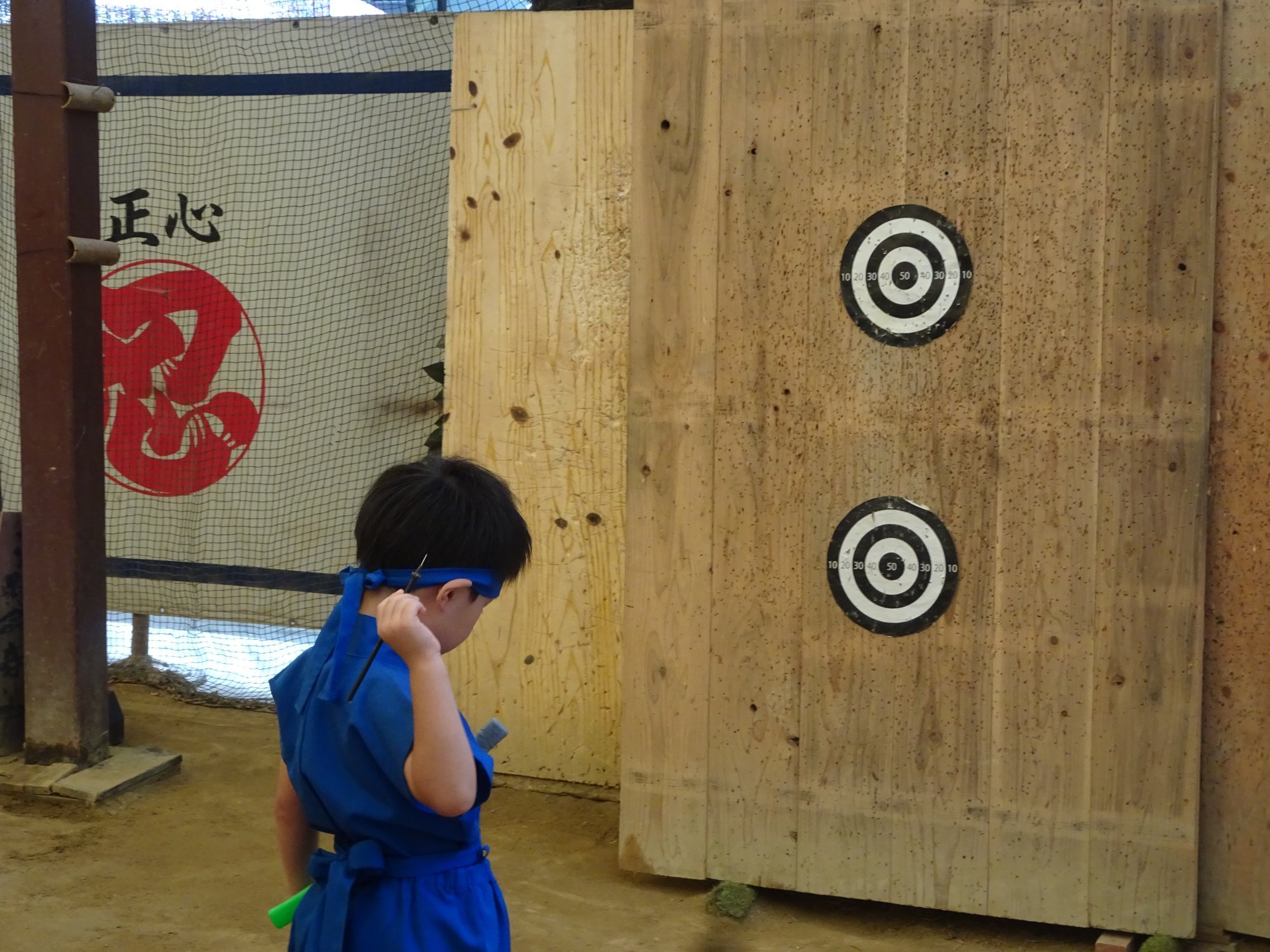
Of all their talents, though, ninjas relied most on self-discipline. One valuable training technique was to meditate under chilly or, in winter, icy cascades, the bottom of the 30-metre-high Dainichi waterfall – one of Akame’s 48 – being a favoured spot.
On a tour conducted by the nature centre, I discover what that was like.
Want to fight like a ninja? Training in Japan and online shows you how
Having each paid 4,000 yen (HK$210) at the reception desk of the modern wooden centre, my group is provided with white robes – symbolising purity – and rubber walking boots by a guide.
Then we follow a ravine trail, clamber over mid-river rocks and ascend a zigzagging, moss-covered stone path to the bottom of the Dainichi waterfall.
Only one or two people can squeeze in at the base of the nearly 90-degree, narrow cliff at a time. The guide shows us where to sit and we take turns meditating for a few minutes each.

I close my eyes while concentrating on my breathing and the water falling upon my body. The sounds of splashing and the massage-like pressure slow my mind, leaving me calmer and more aware.
Later, while awaiting another turn, I am aware of the waterfall’s spray touching my skin, discover a salamander in a leaf-filled puddle at my feet and hear bird and frog calls previously unnoticed.
After meditating, we descend, lighter-footed and -hearted, to the riverside, where children appear to be walking on water.
Arts and crafts are alive in Kanazawa, Japan, living museum of Edo culture
These young ninjas-in-training are crossing the river with each foot attached to a round floating device while grasping a rope connecting trees on opposite banks. Some sway and fall with a splash into the clear, thigh-high water.
They laugh and scream in shock at the cold but clamber back onto the floats for another try.
Our guide explains the use of mizugumo, which ninjas used to cross muddy moats, swamps and rice fields: each foot is attached to a thin rectangular board that is itself tied to the inner side of a thicker, doughnut-shaped floatable board.
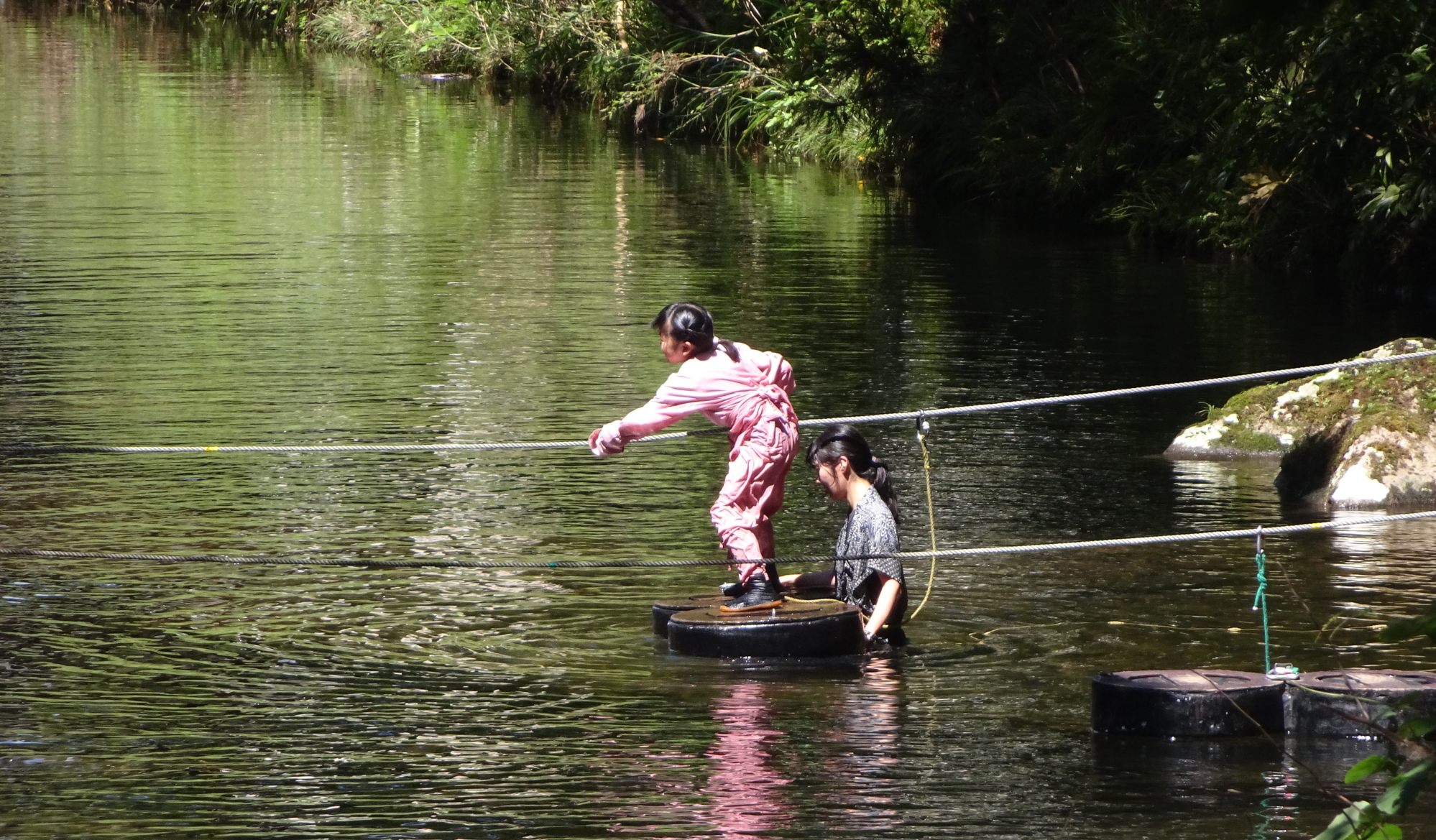
Walking on mizugumo (3,000 yen for almost two hours, including ninja wear) is among the numerous ninja experiences the nature centre runs. I can’t resist trying several others.
In the centre’s changing room, I don shinobi shozoku, ninja-style clothing as portrayed in films: split-toed boots; buttonless, zipperless, loose grey trousers; and a top tied with straps.
Hiking in Japan: Honshu coastal trail celebrates post-tsunami reconstruction
Sprawling cedar tree roots and layers of soft leaves cover the earth and beneath the high tree canopy stands a simple old wooden building. Inside, the guide teaches me how ninjas evaded home intruders.
We run through doors concealed behind hanging scrolls, disappear behind revolving doors and climb in and out of hidden passageways.
Outside in the woods I strike enemies made of logs and rice straw with shuriken (ninja stars) that I toss with flicks of the wrist and darts that I shoot from blow guns with quick puffs of breath.


Invasion training taught ninjas how to move above the streets and use trees to break into homes.
Lying prone on a rope tied horizontally between two trees, I struggle to balance and pull myself forward.
I repeatedly slip off while my guide, with steady, silent movements, crawls across like a caterpillar.
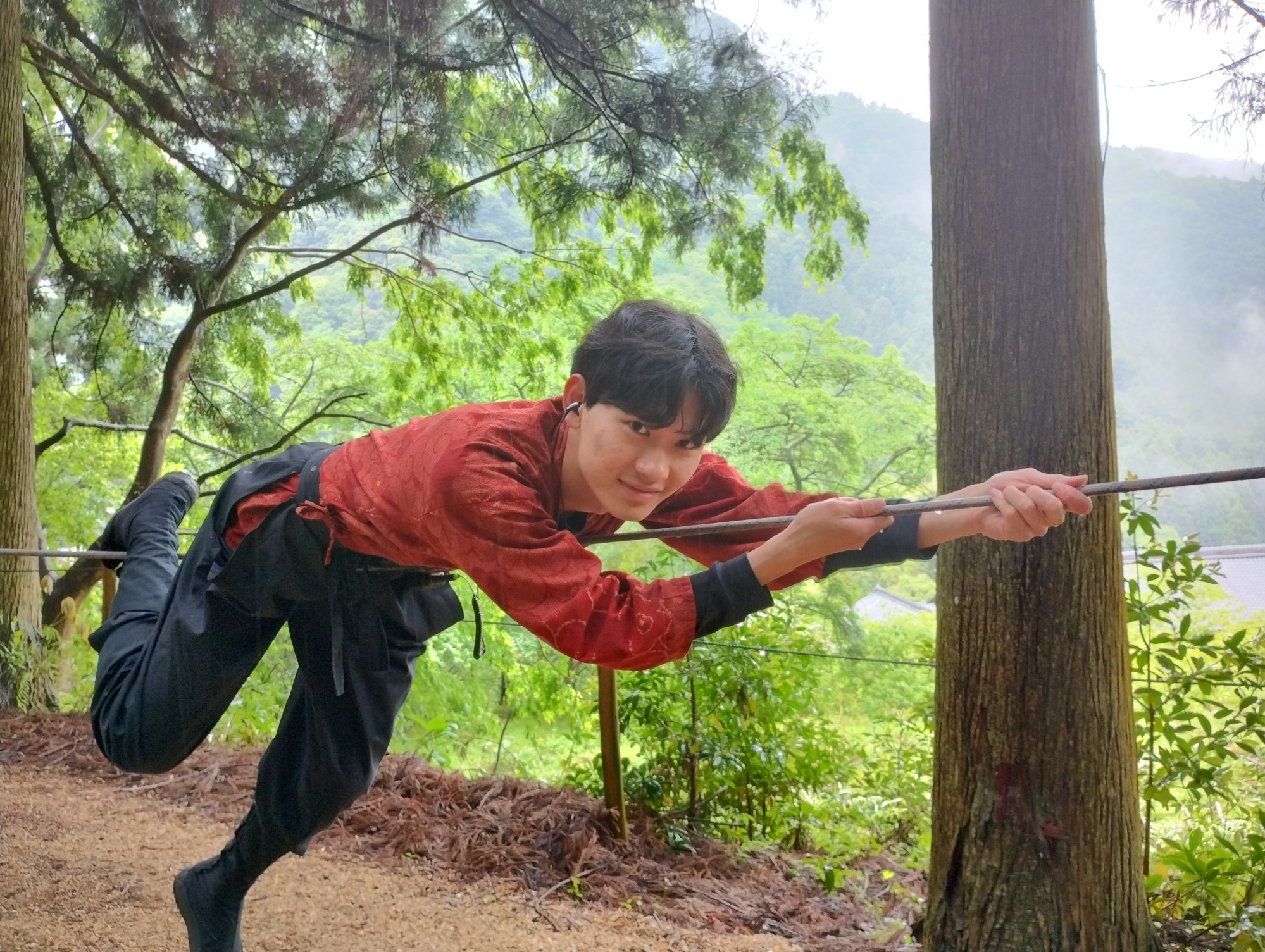
Twenty kilometres to the north of Nabari and a designated Japan Heritage site, the city of Iga also takes its ninja history seriously – but not without a sense of humour, which is evident at the Uenoshi railway station, where life-size mannequins stand by the tracks and perch upon lockers, looking ready to spring into action.
The Iga Railway connects three small stations and riding its pink, blue and green trains – whose exteriors feature paintings of ninja warriors by manga and anime writer and illustrator Leiji Matsumoto – is a good way to get a feel for historical Iga and the green countryside surrounding the city.
Inside the carriages, ninja figures squat on luggage racks, protecting passengers from imaginary bandits.


Near the station is a 136-year-old restaurant named Nikaku. The walls display ninja weapons, armour and tools from floor to ceiling. Nikaku’s dishes represent ninja culture, too, the cooks cutting nori seaweed sheets into shuriken shapes.
Black curries, which can be washed down with a craft Ninja Beer, symbolise ninjas hiding in the dark of night. While I eat, a Japanese-language ninja film plays on a screen hanging on the restaurant’s back wall.
Iga’s souvenir stores have also picked up on the theme, selling as snacks katayaki, a type of brick-hard cracker that sustained ninjas while they were travelling or hiding out on challenging missions.
Ingredients include Iga-grown sesame, nori, flour and mountain yams. Kata means “hard” and yaki means “baked”, and locals suggest breaking them with hammers. I manage to snap mine into little pieces that I suck on, clearly tasting the nori, sesame and yams.
Unlike at many of Japan’s rural museums, English-language explanations are abundant and educational at the Iga Ninja Museum, which exhibits a massive collection of tools, weapons, clothing and documents.
Here I learn how ninjas found alternative uses for everyday objects: rice-cutting sickles were transformed into weapons and castle-wall-climbing tools; manure and herbs were turned into explosives and gunpowder; poison was synthesised from plants.
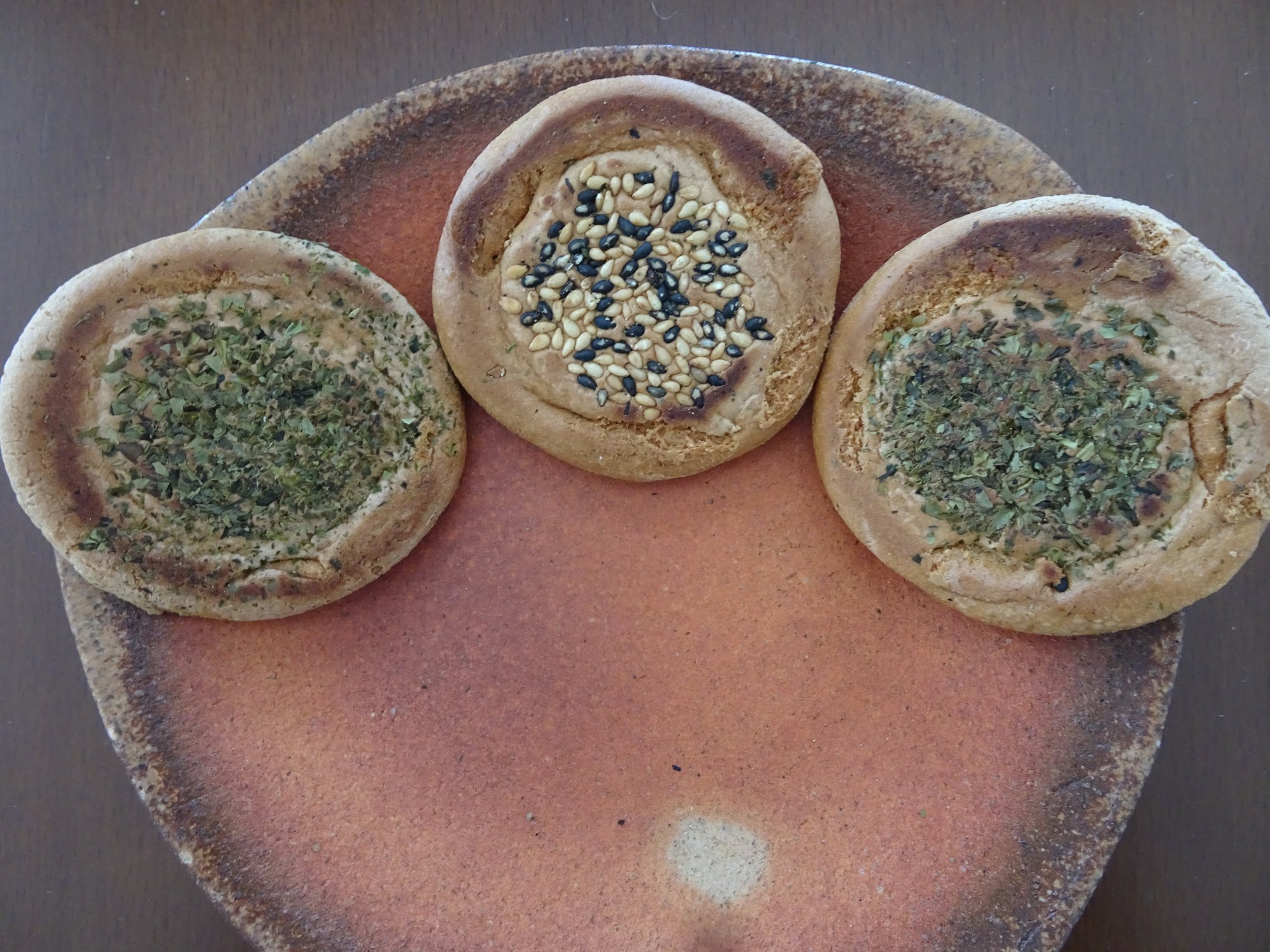
The museum admission fee (800 yen for adults) includes entrance to a wooden farmhouse once owned by an Iga family with ninja roots.
Within, an appropriately clothed guide demonstrates how homeowners could instantly transform shelves into ladders to escape attackers, spring open floor planks to grasp hidden swords and open secret doors by slipping sheets of paper or leaves into their catches.
Under a large tent on the museum grounds (admission 500 yen), members of the Ashura ninja group demonstrate their mastery of concealed weapons and farming tools.
After 150 years of rail travel it’s still at the heart of Japanese culture
One member flings two curved farming sickles about 20 metres. The blades, spinning in the air, thwack into a thick wooden board.
An older actor, role-playing a ninja disguised as a disabled man, pulls out two shiny blades hidden in his bamboo cane to fight off attackers. A female ninja defends herself from an attack with a traditional Japanese wooden and paper umbrella. She finishes her enemy off with a sword secreted in the handle.
Known as kunoichi, female ninjas were considered to be as deadly, sneaky and effective as the men.
A shuriken master sends the weapon whooshing over the audience’s heads to sink deep into the hard wooden target.
A few minutes’ walk from the museum, uphill through Ueno Park and past a moat, is Ueno Castle.
Cherry and other trees grow before its formidable high stone walls. Above are the castle’s chalky white walls, into which are cut narrow windows designed for archers and spearmen, topped with a tiled roof.
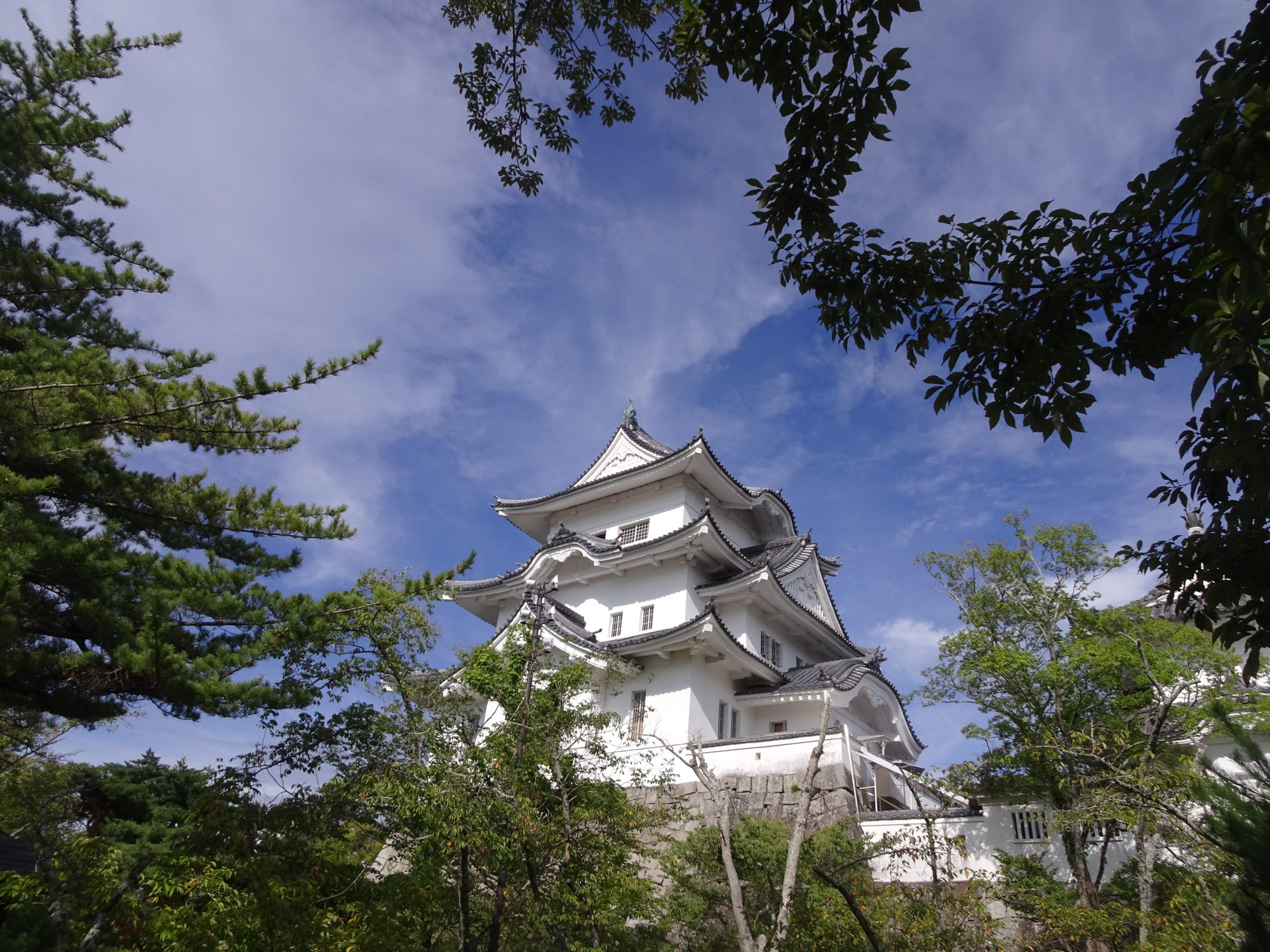
Up steep, narrow stairways are chambers full of centuries-old armour, swords, spears, cooking gear for soldiers and ninja mannequins made to appear as if they’re scaling the walls.
Construction of the original castle began in 1585, but the main part was destroyed in 1612 by a typhoon, while it was still being built. The top floor of the current structure, which dates back to 1935, provides 360-degree views of Iga – and if you look closely, you may just catch sight of a ninja.
Tourism materials encourage visitors to explore Iga while dressed as a ninja and several shops in the city rent out the clothing (1,500 yen). Many sightseers have taken the city up on the offer.

